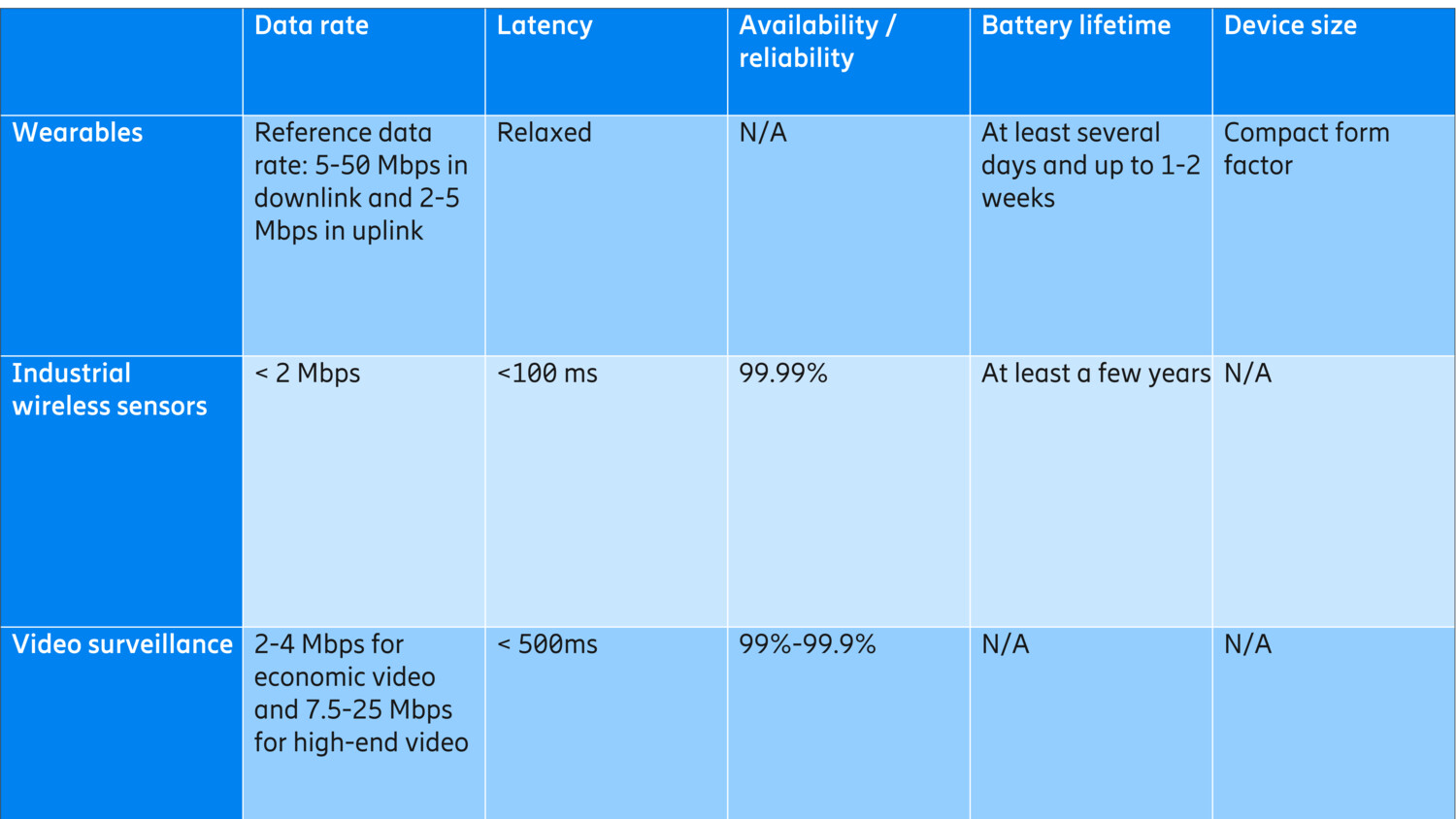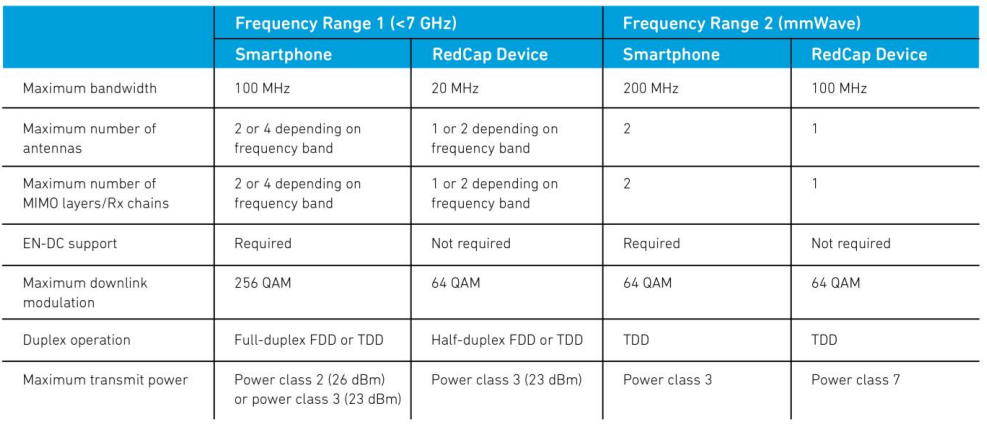In 5G NR Release 15, Enhanced mobile broadband (eMBB), ultra-reliable low latency communications (URLLC), and massive machine-type communications (mMTC) were the foundational goals. At the 3GPP TSG#96 meeting, 3GPP announced 5G Release 17 finalized, which includes the 5G reduced capability (RedCap) specification for medium- and high-speed connections.
What is RedCap?
3GPP introduced, in Release 17, several enhancements to provide connectivity to mid-tier IoT devices that lack the need for the full capabilities of 5G NR but have much more stringent cost and power consumption requirements. These RedCap devices will benefit from the power and scale of 5G deployments but leverage fewer 5G capabilities for an optimum balance of features versus cost and power efficiency.
The concept of RedCap is to build user equipment (UE) that can benefit from the scale of 5G NR deployments but leverage fewer 5G NR capabilities for an optimum balance of features versus cost and power consumption.
RedCap devises Use Cases
3GPP specifies three use cases for RedCap devices: industrial sensors, surveillance devices, and wearables. 3GPP’s technical report (TR) 38.875 specifies the maximum data rate, end-to-end (E2E) latency, and service availability for each use case, as shown in the below table:

RedCap Technical Requirments
The key requirements of these use cases, described in the 3GPP document RP-202933, “New WID on the support of reduced capability NR devices”, are summarized below Table. To maximize the benefit of economies of scale, it is desirable that all these three use cases can be addressed by a common NR RedCap framework.

RedCap Capabilities
To meet the needs of IoT devices, RedCap RF solutions must offer reduced size, improved battery life, and lower cost than earlier 5G solutions. To meet those goals, RedCap requires much less RF complexity compared to the 5G RF solutions in smartphones. These reductions in complexity are feasible because RedCap devices – unlike smartphones – do not need extremely high data rates
RedCapdevices can efficiently support 150 Mbps and 50 Mbps in the downlink and uplink, respectively, due to the designed optimizations:
- Narrower bandwidths, i.e., 20 MHz in sub-7 GHz or 100 MHz in millimeter wave (mmWave) frequency bands,
- A single transmit antenna,
- A single receive antenna, with 2 antennas being optional,
- Optional support for half-duplex FDD,
- Lower-order modulation, with 256-QAM being optional, and
- Support for lower transmits power.
The reduced complexity contributes to more cost-efficient NR-Light devices, longer battery life due to lower power consumption, and a smaller device footprint, which enables newer designs for a broad range of use cases.

